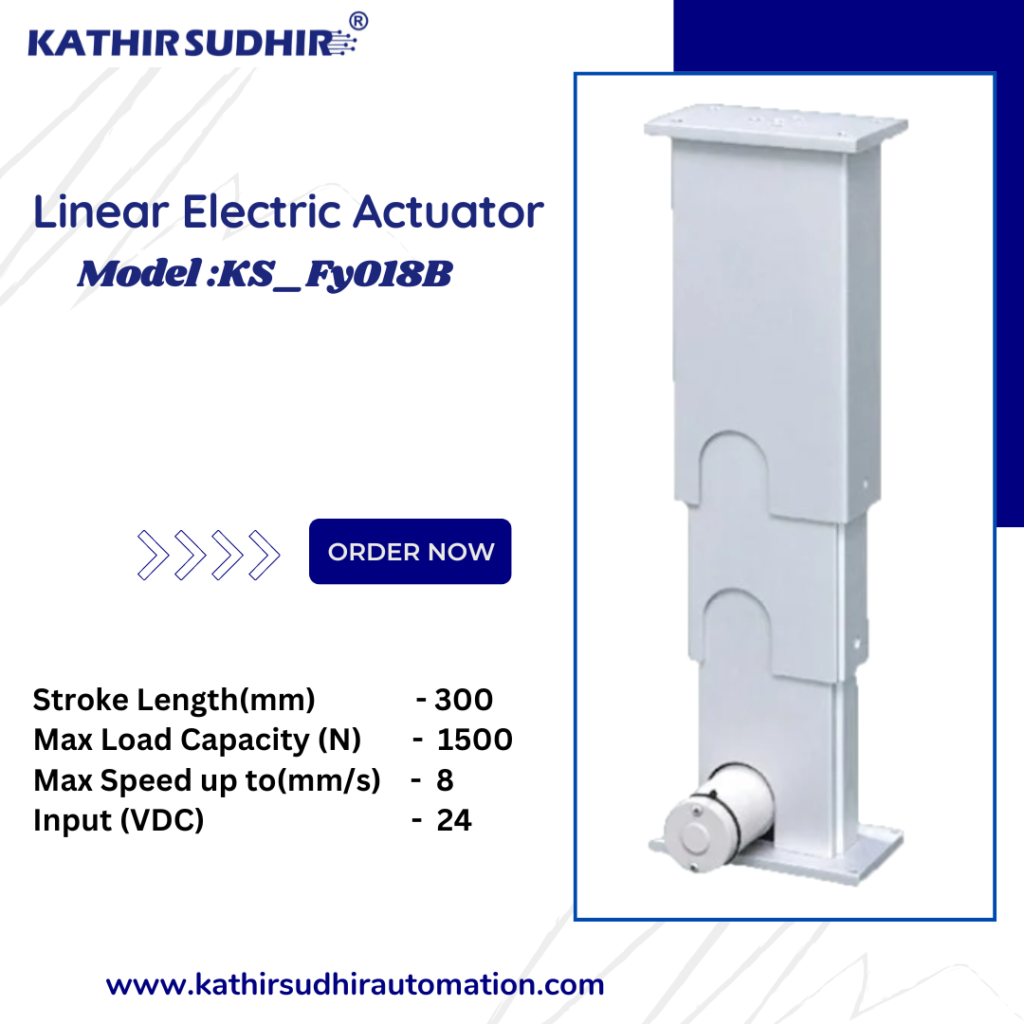In the vast and intricate landscape of industrial machinery, precision is paramount. From manufacturing processes to robotics assembly lines, the seamless operation of intricate systems hinges on the meticulous control of various components. Among these components, column actuators stand out as silent yet indispensable players, enabling the precise movement and positioning of essential equipment. In this blog, we delve into the pivotal role of column actuators in industrial settings, exploring their functionality, applications, and the transformative impact they have on enhancing operational efficiency.

Understanding Column Actuators
At its core, a column actuator is a mechanical device designed to provide controlled linear motion. Unlike traditional linear actuators, which typically operate in a straight line, column actuators are distinguished by their vertical orientation, facilitating upward and downward movement. This vertical configuration makes them ideal for applications where height adjustment or precise positioning is required, such as in manufacturing, material handling, and automation systems.
Functionality and Design
Column actuators operate on the principle of converting rotary motion into linear motion, typically achieved through the use of a lead screw mechanism or a belt drive system. A motor, often servo or stepper, provides the rotational force necessary to drive the actuator, while precision components ensure smooth and accurate movement.
The design of column actuators varies depending on the specific application requirements. Some may feature telescopic columns to accommodate varying heights, while others incorporate built-in sensors for precise position feedback. Robust construction and high-quality materials are standard to withstand the rigors of industrial environments and ensure long-term reliability.
Applications Across Industries
The versatility of column actuators makes them indispensable across a wide range of industries. In manufacturing, they play a crucial role in assembly lines, where precise positioning of workpieces and tools is essential for efficient production processes. In warehousing and logistics, column actuators are used in conveyor systems and lifting platforms to facilitate the smooth movement of goods.
Moreover, in the realm of automation and robotics, column actuators serve as the backbone of robotic arms and manipulators, enabling them to perform intricate tasks with unparalleled accuracy. From pick-and-place operations to intricate assembly tasks, these actuators provide the precise motion control necessary for optimal performance.
Advantages and Benefits of Column Actuators
The adoption of column actuators offers several distinct advantages for industrial applications:
- Precision: Column actuators enable precise positioning with high repeatability, ensuring consistent and accurate performance.
- Versatility: Their vertical orientation allows for flexible height adjustment, making them suitable for a variety of applications.
- Efficiency: By automating height adjustment and positioning tasks, column actuators streamline workflows and increase overall efficiency.
- Reliability: Built to withstand harsh industrial environments, column actuators deliver reliable performance even in demanding conditions.
- Safety: Integrated safety features and advanced control systems ensure safe operation, protecting both equipment and personnel.
Conclusion
In the dynamic landscape of industrial automation, column actuators emerge as indispensable tools for enhancing precision, efficiency, and reliability. Their ability to provide controlled vertical motion enables a myriad of applications across industries, from manufacturing and logistics to robotics and beyond. As technology continues to evolve, the role of column actuators in driving innovation and optimizing industrial processes will only become more pronounced, cementing their status as essential components in the quest for operational excellence.
